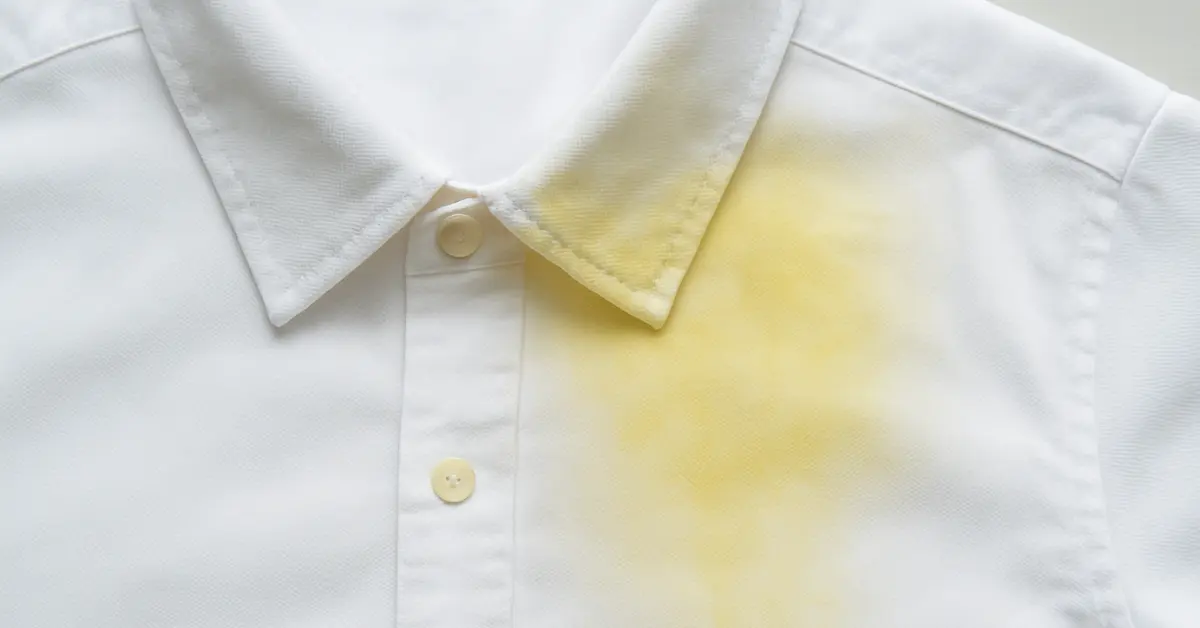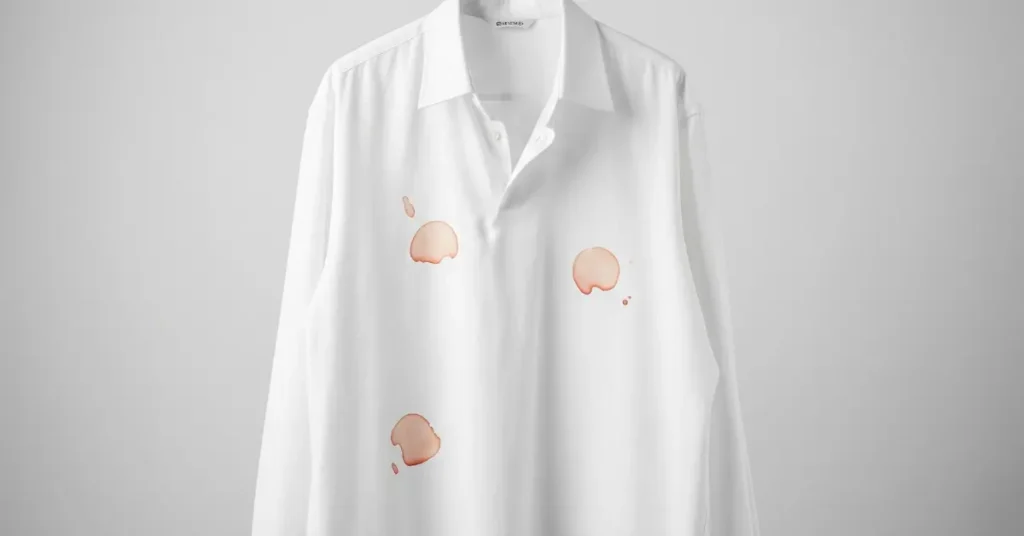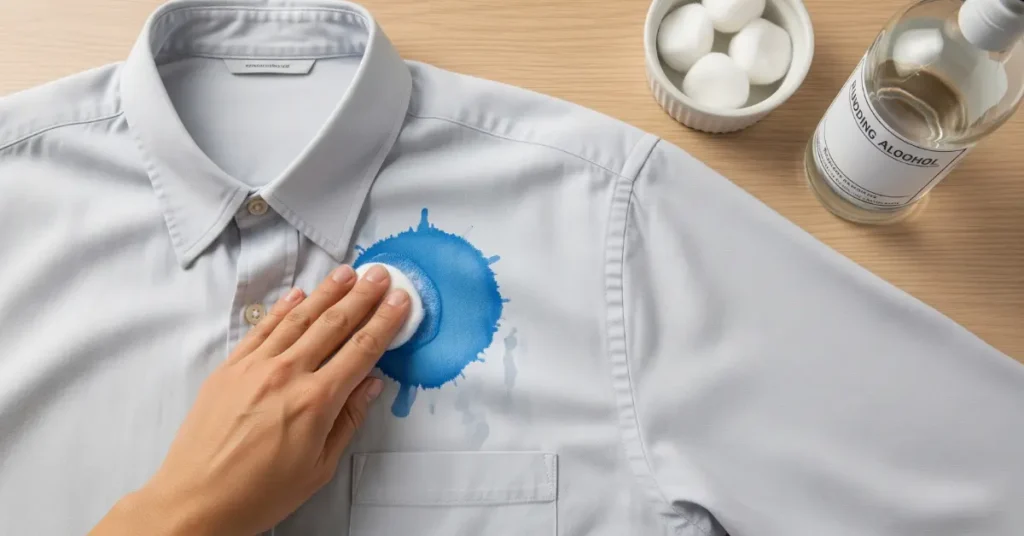A few days ago, I took out my favorite white shirt and saw yellow stains on the collar and underarms. It has happened before, and I’ve noticed that these stains often appear on white clothes.
They’re mostly caused by aluminum-based deodorants, but detergent residue, body oils, sunscreen, hard water, bleach, poor rinsing, food spills, and even improper storage can also lead to them. The good thing is that these stains can be prevented and removed if you know the causes.
Let’s go through why they appear, how to avoid them, and the best ways to get rid of them.
What Causes Yellow Stains on Clothes?
Many people think sweat alone causes yellow stains, but that’s only part of the story. Yellowing occurs due to chemical reactions between sweat, deodorants, detergent residues, oils, skincare products, and sometimes minerals in water. Over time, these reactions leave visible stains on fabric.
Below are the most common causes of yellow stains on clothes, explained in detail with solutions.
1. Sweat and Deodorant Build-Up
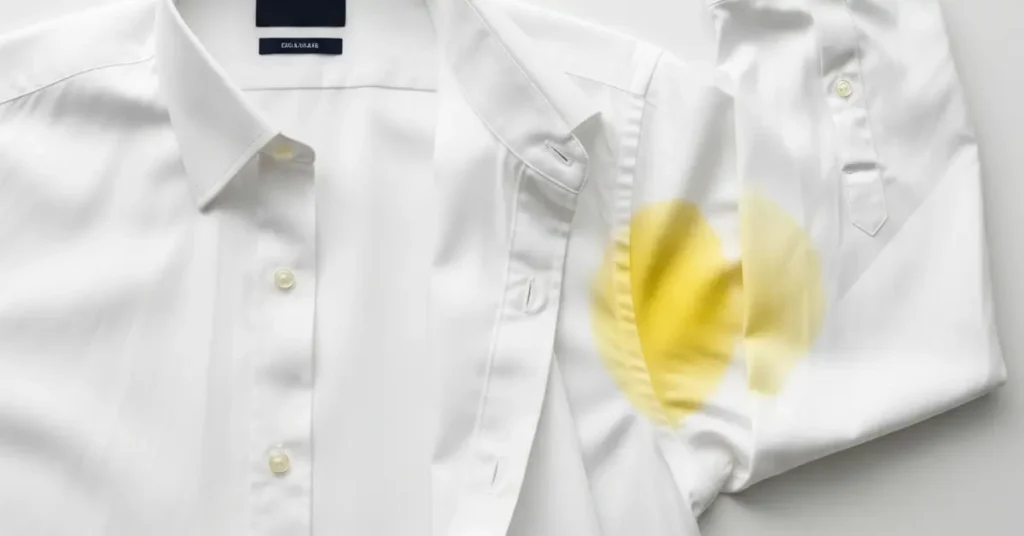
The most common type of yellow stains I’ve seen is caused by sweat mixing with deodorant. Sweat contains proteins and salts.
When it comes in contact with aluminum-based deodorants, the reaction creates yellow stains that cling tightly to fabric fibers, especially in the underarm area.
These stains don’t wash out easily because they get embedded deep into the fabric over time. That’s why old shirts often have permanent-looking yellow armpit stains.
Solution:
To prevent this, I now prefer using aluminum-free deodorants. Another trick that works well is wearing a light undershirt. It acts as a barrier, reducing direct contact between sweat and the outer fabric.
If stains do appear, I pretreat them before washing. A simple baking soda paste or soaking the area in lemon juice works really well for fresh stains. For older stains, hydrogen peroxide mixed with baking soda is more effective.
2. Body Oils, Lotions, and Sunscreens
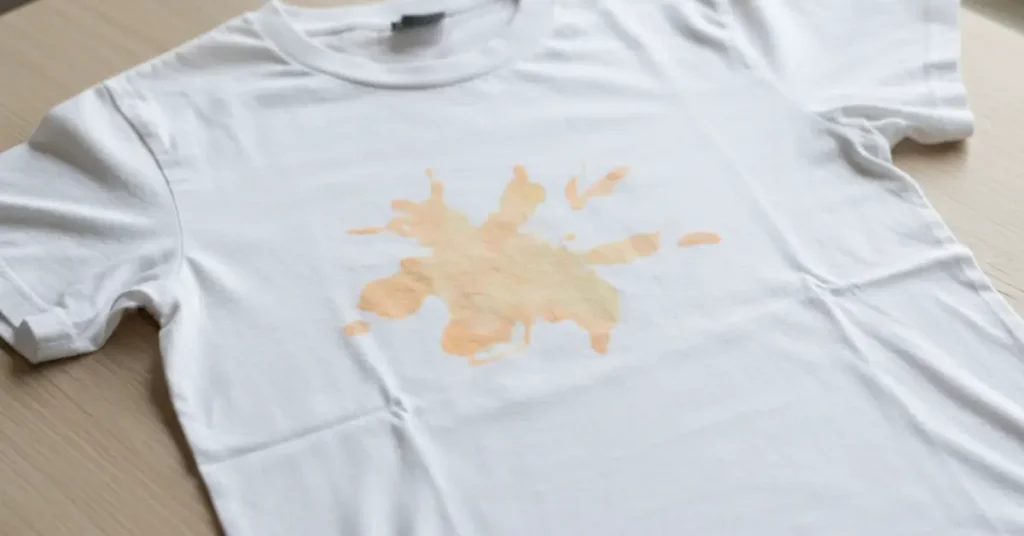
Our skin naturally produces oils, and when those oils transfer to fabric, they can cause discoloration over time.
If you apply lotion or sunscreen and dress immediately, the products mix with skin oils and react with fabric. Sunscreens are a big culprit because many of them contain avobenzone.
When avobenzone comes into contact with minerals in water (like iron), it creates orange stains that are very noticeable on white clothes.
Solution:
What I do now is simple; I wait at least 10-15 seconds after applying lotions or sunscreen before putting on clothes. If possible, I let the sunscreen dry completely. This small step has saved me from many stains.
3. Using Too Little Detergent
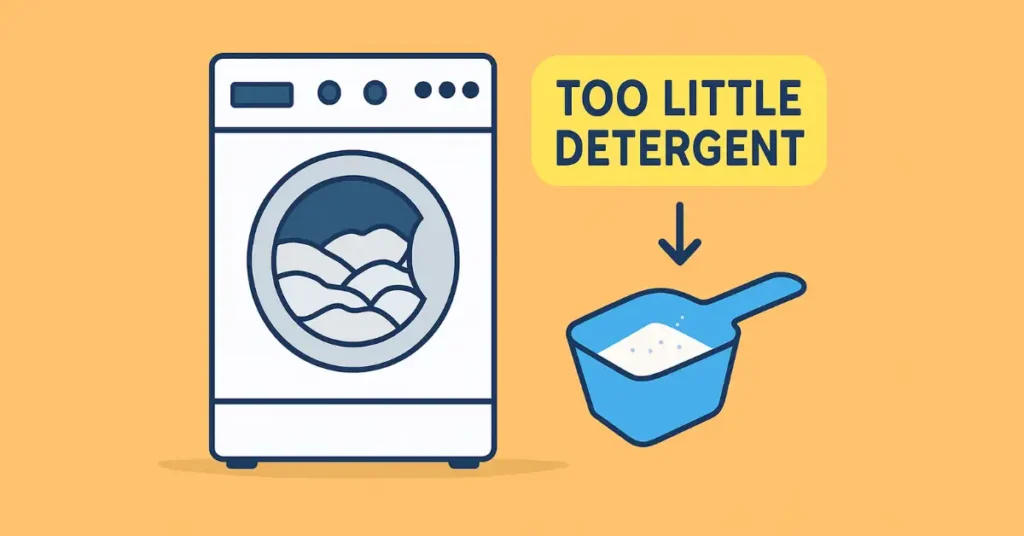
This one surprised me at first. I thought using less detergent was safer, but it actually makes things worse.
When you don’t use enough detergent, sweat, oils, and dirt don’t get fully cleaned. They stay behind in small amounts, and over time, they oxidize and turn into yellow stains.
Solution:
Always measure the detergent properly. Use the amount recommended for your load size and type of fabric.
Also, make sure your washing cycle is long enough to break down oils and dirt. Skipping or rushing the wash cycle is one reason clothes keep yellowing.
4. Hard Water and Mineral Build-Up
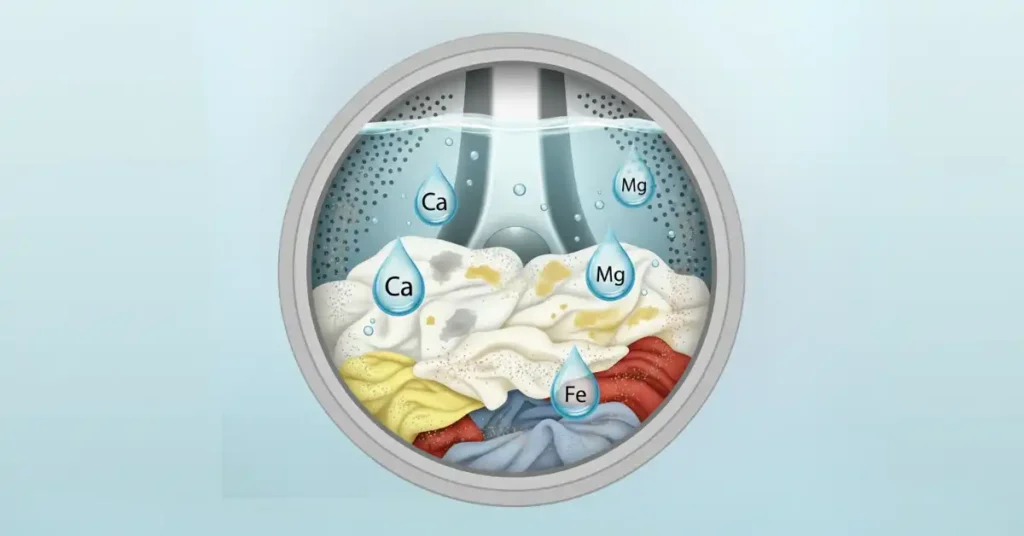
If you live in an area with hard water, you probably know the struggle. Hard water contains minerals like iron, calcium, and magnesium.
These minerals attach to fabric fibers during washing. Over time, they leave behind dull yellow, gray, or even rust-colored stains.
Solution:
To prevent this, I use a water softener in my washing machine. Another option is using detergents made specifically for hard water. They contain ingredients that neutralize minerals and keep fabrics from absorbing them.
5. Overuse of Bleach
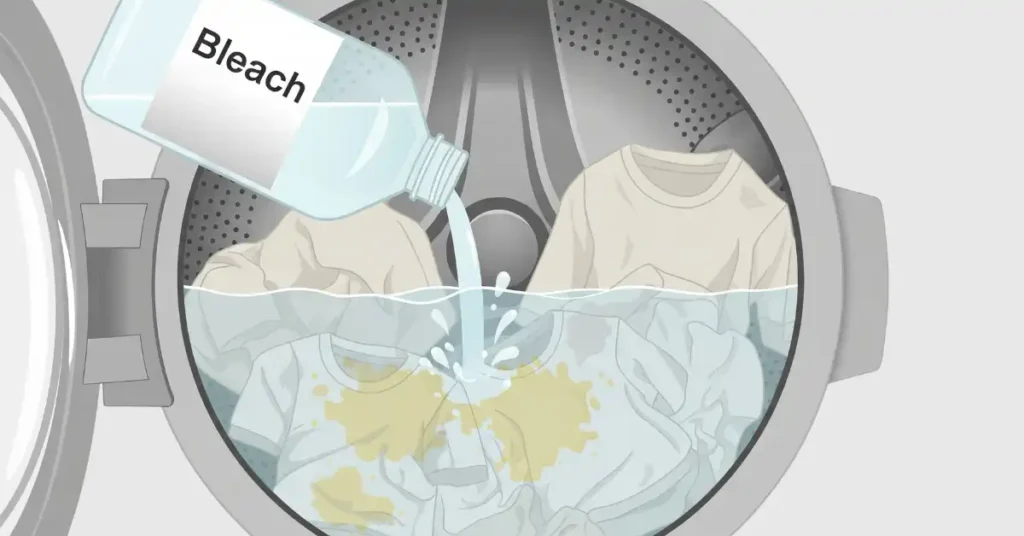
It might sound odd, but too much bleach actually causes yellowing instead of preventing it. Chlorine bleach weakens fabric fibers.
When it reacts with hard water minerals, it leaves behind dull yellow or brownish stains. Instead of making clothes whiter, it makes them look older.
Solution:
I avoid chlorine bleach as much as possible and instead use oxygen-based bleach alternatives. They are gentler on fabric and still keep whites looking fresh without causing yellow stains.
6. Poor Rinsing Habits
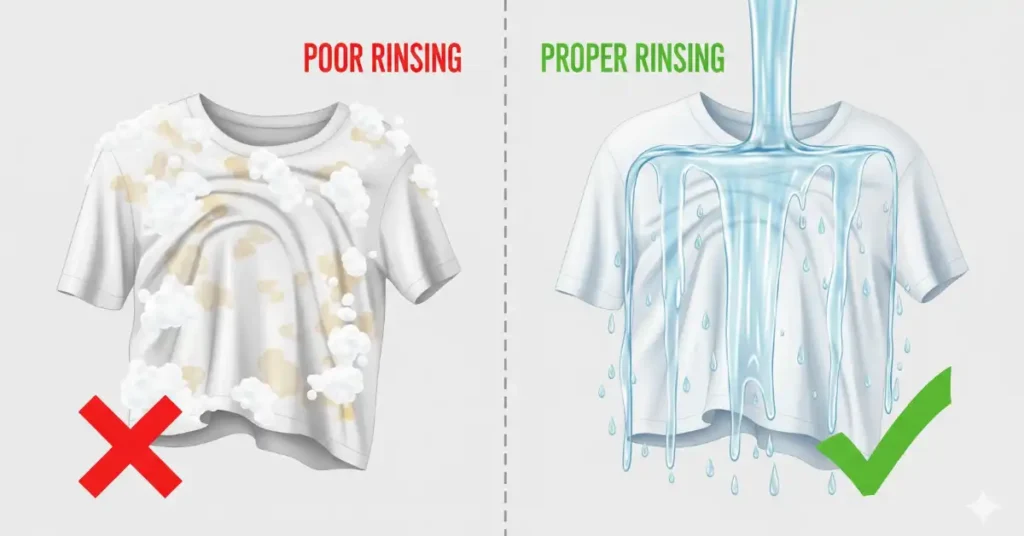
Even if you use the right detergent, if your clothes don’t rinse properly, soap residue builds up. This residue traps dirt and oils in the fabric. Over time, the residue itself oxidizes and turns yellow.
Solution:
I started adding an extra rinse cycle to my laundry routine, especially for whites. This ensures that no detergent is left behind. Also, using too much detergent can cause poor rinsing, so I always stick to the recommended amount.
7. Food and Drink Stains (Turmeric, Mustard, Coffee)
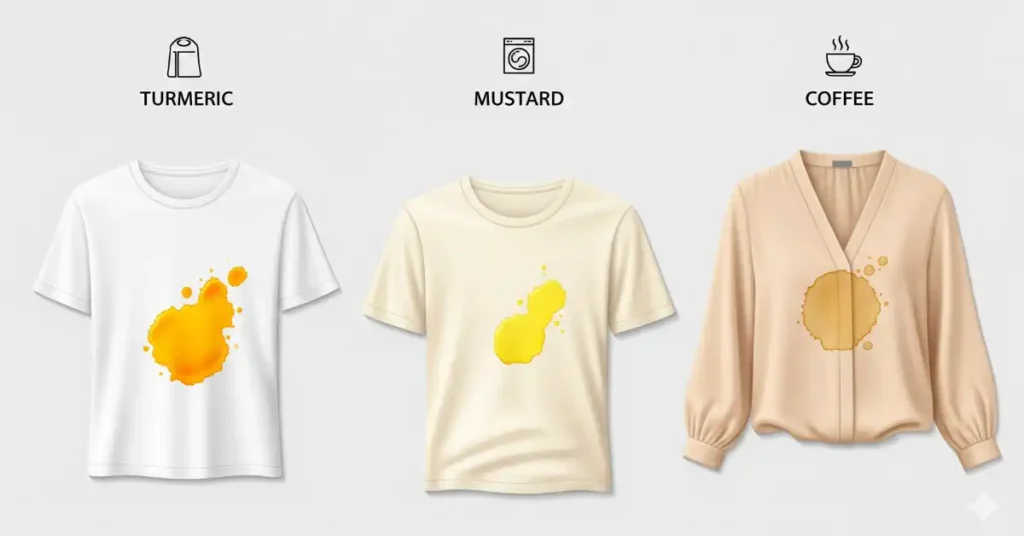
Certain foods and drinks can leave yellow stains when they dry and oxidize. Turmeric and mustard are the biggest culprits because of their strong pigments. Coffee stains also tend to leave a yellowish tint if not cleaned properly.
Solution:
If I spill something on my clothes, I immediately pretreat the stain before it sets. The longer you wait, the harder it becomes to remove.
For turmeric or mustard, lemon juice or vinegar works really well. For coffee stains, cold water and a baking soda paste usually do the trick.
How to Prevent Yellow Stains on Clothes
Through trial and error, I’ve learned that preventing yellow stains is much easier than trying to remove them later. Here are the methods I personally use:
- Pretreat sweat areas: I apply baking soda paste to underarms and collars before washing.
- Choose the right bleach: I avoid chlorine bleach and only use oxygen bleach.
- Be careful with drying: I never over-dry clothes on high heat. High heat sets stains. I dry whites under low heat or in the shade.
- Let skincare absorb: After applying lotions, creams, or sunscreen, I wait until they’re fully absorbed before dressing.
- Wear breathable clothes: Sweat-proof undershirts or loose-fitting shirts help reduce sweat contact.
- Wash whites separately: I never mix whites with colored clothes.
- Proper rinsing: I make sure to rinse thoroughly and avoid leftover detergent.
How to Store Clothes to Avoid Yellow Stains
Storing clothes the wrong way is another reason they turn yellow, especially white fabrics.
I always make sure my clothes are completely dry before putting them away, because even a little moisture can leave stains over time. For storage, polypropylene containers or acid-free tissue paper work best to protect delicate fabrics.
Clothes should also be kept in a cool, dry place away from heat and sunlight. One more thing I’ve learned is to fold and pack clothes with clean hands, since oils or lotions on the skin can easily transfer and cause marks later.
How to Remove Yellow Stains from Clothes
Even after taking precautions, yellow stains can still show up on clothes. What has worked best for me is a simple homemade paste.
Mix baking soda, hydrogen peroxide, and a few drops of dish soap, then apply it directly to the stain.
After letting it sit for about 30 minutes, rinse it off with cold water and let the fabric air-dry on low heat.
This method has saved many of my shirts that I once thought were permanently ruined.
Conclusion
Yellow stains are annoying, but they don’t mean your clothes are ruined forever. Once you know the real causes, like sweat, deodorants, oils, or even hard water, it gets much easier to prevent them.
With a few small changes in the way you wash, dry, and store clothes, your whites can stay fresh for longer. And if stains still show up, simple home remedies are often enough to save them without needing expensive products.
If you deal with white clothes a lot, I’ve also shared a detailed guide on getting stains out of white clothes.
FAQs
Why do clothes get yellow stains after washing?
Mostly because of sweat and deodorant. If the deodorant has aluminum, stains come faster. Sometimes, detergent, hard water, bleach, or not rinsing clothes properly also leave marks.
Are yellow stains permanent?
No, they can come out. Some are tough, but with the right method, like baking soda, vinegar, or hydrogen peroxide, you can clean them.
What’s the best way to remove yellow sweat stains?
Mix baking soda, hydrogen peroxide, and dish soap. Rub it on the stain, leave it for half an hour, then wash it.
Can vinegar remove yellow stains from clothes?
Yes, it works. Soak the stain in vinegar mixed with water, then wash. It helps loosen the stain.
What’s the best stain remover for yellow stains on white clothes?
Home remedies like baking soda and hydrogen peroxide work well. If you want a ready-made option, enzyme cleaners or OxiClean are good.
